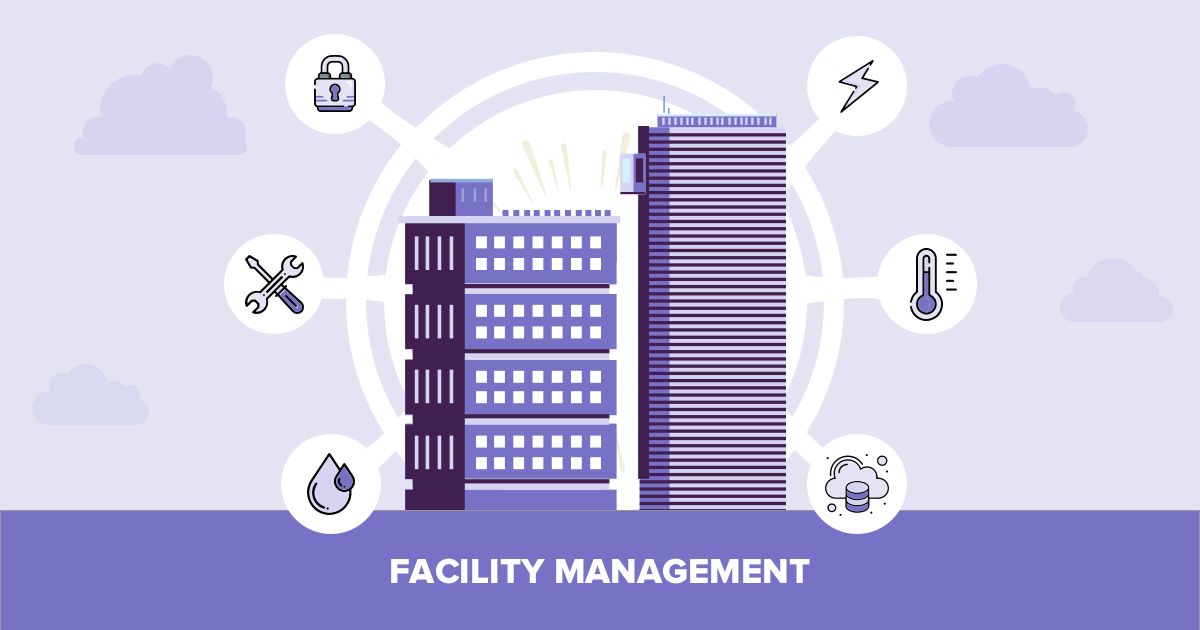Exactly How Facility Management Improves Work Environment Efficiency
Exactly How Facility Management Improves Work Environment Efficiency
Blog Article
Key Fads Shaping the Future of Facility Management in 2024
As we look ahead to 2024, the landscape of facility management is poised for significant transformation, driven by several vital patterns. The assimilation of smart structure technologies and a shift in the direction of data-driven decision-making promise to enhance functional efficiency while prioritizing sustainability in technique. In addition, the introduction of hybrid job designs is improving workplace atmospheres, demanding cutting-edge layout options that provide to evolving employee demands. Amid these modifications, the emphasis on owner wellness continues to acquire traction, emphasizing the importance of a healthy and balanced work environment. How these fads will certainly show up in practice remains an important question for industry professionals.
Smart Building Technologies

Smart building technologies incorporate a large range of systems, including intelligent illumination, heating and cooling controls, and safety systems. By integrating these systems, facility managers can monitor and adjust criteria in real-time, leading to significant decreases in energy waste and operational prices. For instance, clever sensing units can identify occupancy levels and readjust illumination and temperature appropriately, ensuring that power is just made use of when essential.
In addition, these technologies help with improved information collection, permitting organizations to track usage patterns and recognize possibilities for more enhancements. The application of clever structure technologies not just adds to sustainability objectives but additionally creates much healthier work environments that can enhance worker performance and fulfillment.
As we relocate right into 2024, the adoption of clever building innovations will likely increase, reflecting a broader change in the direction of more smart, responsive, and lasting center administration techniques.
Data-Driven Decision Making
Significantly, companies are leveraging data-driven choice making to enhance facility monitoring practices. By harnessing information analytics, center supervisors can acquire workable insights that dramatically improve operational effectiveness and resource appropriation. The assimilation of innovative modern technologies, such as IoT sensors and real-time tracking systems, allows the collection of large quantities of information on structure efficiency, tenancy prices, and energy intake.
This riches of information enables facility supervisors to recognize trends, forecast maintenance demands, and proactively address concerns prior to they rise. Anticipating analytics can anticipate equipment failings, decreasing downtime and repair costs. In addition, information visualization tools facilitate much better communication amongst stakeholders, guaranteeing that notified choices are made collaboratively.
Additionally, data-driven methods improve tactical preparation by enabling center managers to examine the efficiency of existing practices and make notified options pertaining to investments in innovation or facilities. As organizations significantly prioritize functional excellence, data-driven decision production is positioned to come to be a cornerstone of successful facility monitoring strategies in 2024 and beyond. Ultimately, the ability to utilize information successfully will equip organizations to produce much more effective, productive, and resistant centers.
Sustainability and Eco-friendly Practices
The emphasis on data-driven choice making normally straightens with the growing concentrate on sustainability and eco-friendly practices within center administration. As companies increasingly focus on ecological responsibility, center supervisors are leveraging analytics to optimize resource usage, reduce waste, and reduce carbon footprints. This calculated strategy makes it possible for the integration of energy-efficient systems, such as LED lighting, smart a/c controls, and sustainable energy resources right into facility procedures.
Furthermore, the application of lasting techniques prolongs past energy usage. Facility supervisors are adopting eco-friendly materials and advertising reusing campaigns to create a circular economy within their centers. This not only improves the ecological account of the company but also fosters a culture of sustainability amongst workers.
Conformity with environmental laws is another vital element driving the fostering of green practices. By using information analytics, facility supervisors can keep track of compliance metrics and recognize areas for renovation, ensuring adherence to worldwide and regional sustainability requirements.
Crossbreed Work Models
A significant shift in the direction of crossbreed job versions is reshaping the landscape of facility management in 2024. This standard integrates in-office and remote job, requiring a reevaluation of area utilization, source allowance, and staff member interaction strategies. Organizations are progressively recognizing the significance of versatile work areas that satisfy diverse requirements and choices.
Center supervisors have to adjust by applying versatile office styles that sustain joint initiatives while giving areas for concentrated work. This consists of the combination of technology to facilitate smooth communication and cooperation among remote and in-office workers. Smart building services, equipped with sensors and analytics, permit real-time tracking of room usage, making it possible for companies to enhance their website here settings successfully.
Furthermore, hybrid work models emphasize the demand for efficient facility management that focuses on worker experience. In significance, the crossbreed job design is reinventing facility management, motivating a positive technique to meet the developing needs of the workforce.
Improved Passenger Health
As organizations welcome hybrid job versions, an enhanced concentrate on resident wellness is ending up being integral to center management approaches. Facility Management. This shift identifies that a satisfied and healthy workforce directly influences productivity and retention prices. Center managers are now focusing on atmospheres that advertise psychological and physical wellness, integrating components such as all-natural lighting, biophilic design, and obtainable wellness resources

Technology plays a critical function in this development. Smart building systems can monitor environmental elements and readjust setups in real-time, making sure optimal comfort levels - Facility Management. Feedback systems, such as occupancy sensing units and staff member studies, permit facility managers to constantly refine wellness campaigns based on passenger needs.

Conclusion
In 2024, the future of facility monitoring will be considerably affected by the assimilation of smart structure modern technologies and data-driven decision-making, fostering boosted functional performance. Sustainability efforts will certainly focus on environmentally friendly techniques, while the appearance of crossbreed work designs will necessitate adaptable office styles. A heightened emphasis on passenger health through innovative Heating and cooling systems and biophilic design will certainly add to healthier job environments. These trends collectively underscore the developing landscape of facility monitoring in reaction to contemporary obstacles and possibilities.
Center managers are adopting environmentally friendly materials and promoting recycling initiatives to develop a circular economic climate within their facilities.A significant shift in the direction of hybrid job versions is reshaping the landscape of center monitoring in 2024.Furthermore, crossbreed job versions highlight the requirement for efficient center management that prioritizes worker experience.As companies accept hybrid job designs, an increased focus on resident wellness is coming to be integral to center monitoring methods.In 2024, the future of center management will certainly be considerably affected by the combination of smart building modern technologies and data-driven decision-making, promoting enhanced functional effectiveness.
Report this page